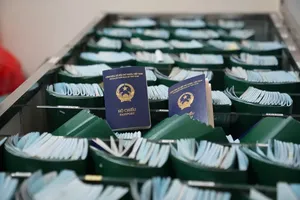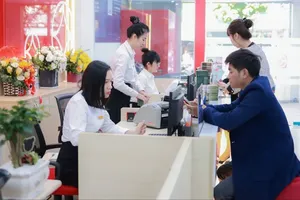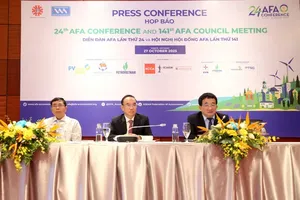
Clients looking into a future apartment complex in Binh Tan District, Ho Chi Minh City. (Photo: SGGP)
Vietnam’s economic credits as of April 16 have reached VND9,490 trillion (about US$411 billion), up 3.34 percent compared to the end of 2020, said the State Bank of Vietnam (SBV).
Plus, the country’s credits increased by 0.41 percentage points in the first 2 weeks of April compared to the end of March 2021, quadrupling the growth rate year-on-year.
Most notably, credit capitals are mostly reserved for manufacturing, especially commodity production and export.
Specifically, Vietbank has given out production loans at 6.5 percent interest rate per year to promote production and business activities. In addition, companies with medium and long-term capital needs can get loans at 8.2 percent per year for the first 12 months until the end of 2021 at this bank.
Meanwhile, SeABank is offering a zero-interest rate policy for businesses needing urgent working capital without having to carry out loan procedures. Vietcombank also recently signed a credit contract worth VND1,200 billion (about US$52 million) for a high-tech, environmentally friendly industrial park in Hai Duong Province.
Experts believe credit growth will continue to flourish in the remaining months of the second quarter of 2021, especially for manufacturing, export, trade and tourism.
On the other hand, commercial banks also set a rather high credit growth target for 2021. For example, OCB aims to increase loan rate by 5 percent in the first quarter of 2021 year-on-year, 25 percent of which is reserved for retail and manufacturing. Sacombank at the end of the first quarter also reached the 5.8 percent credit limit set by SBV.
Considering the situation, many experts believe the low credit score for stocks and real estate is due to strict limits set by SBV and not the lack of demand for loans.
Statistics showed that in reality, real estate credit is at some VND600,000 - 650,000 billion (US$26 – 28.2 billion), accounting for only 7 percent of Vietnam’s outstanding loans.
Plus, the Credit Department for Economic Sectors stated that 65 percent of the outstanding loans in the first quarter of 2021 is for buying housing and home repairs, which should be promoted for welfare purposes.
For instance, although property-related loans at the commercial bank OCB account for 30 percent of the bank’s outstanding loans, but only 1 percent is bad debts, said OCB’s general director.
From the perspective of real estate businesses, in order to control cash flows into the real estate sector, the government should monitor resources with unknown origin, while commercial banks should beware of real estate dealers looking to inflate land and house prices, said Chairman of the HCMC Real Estate Association.









)

)












